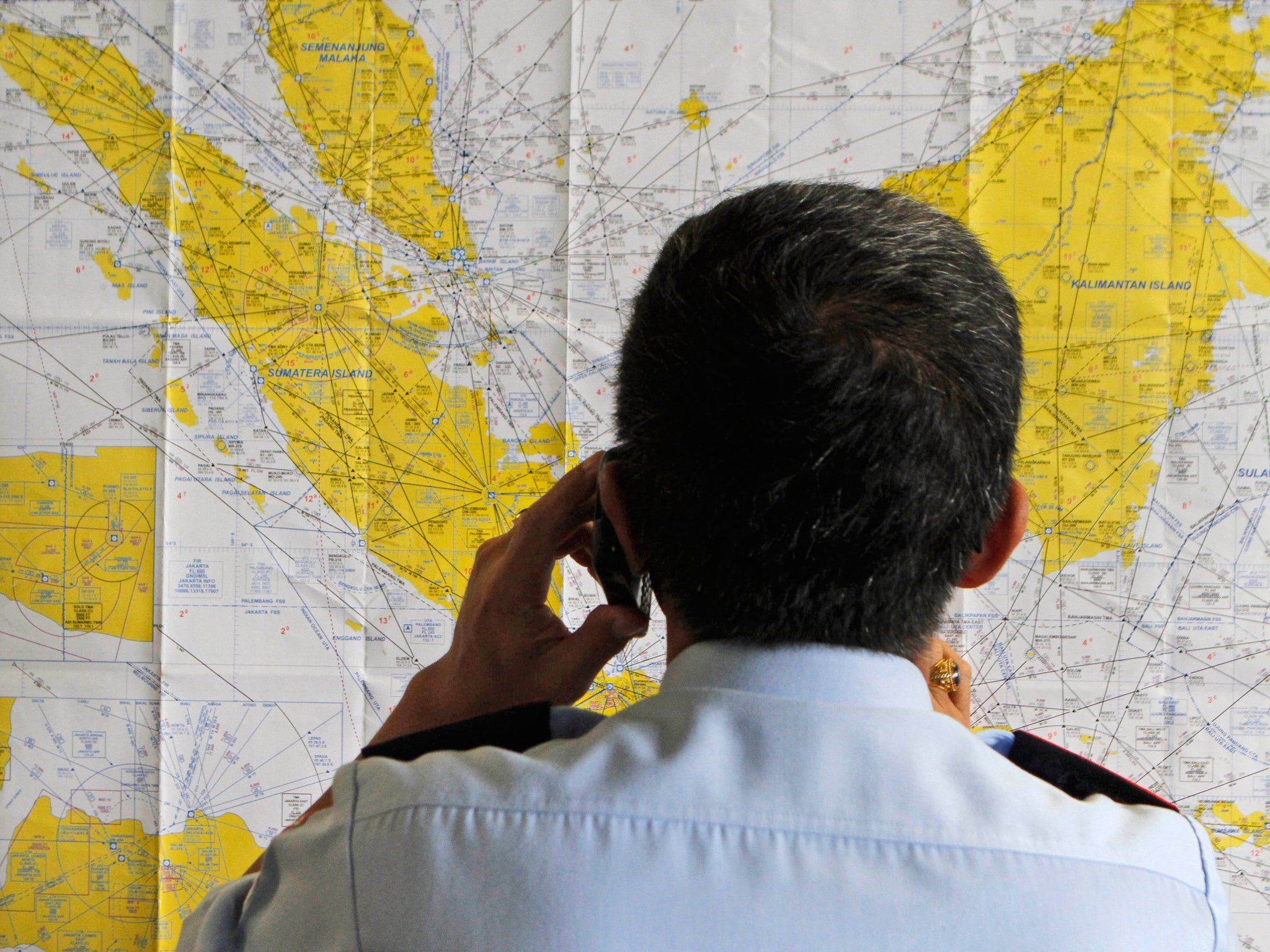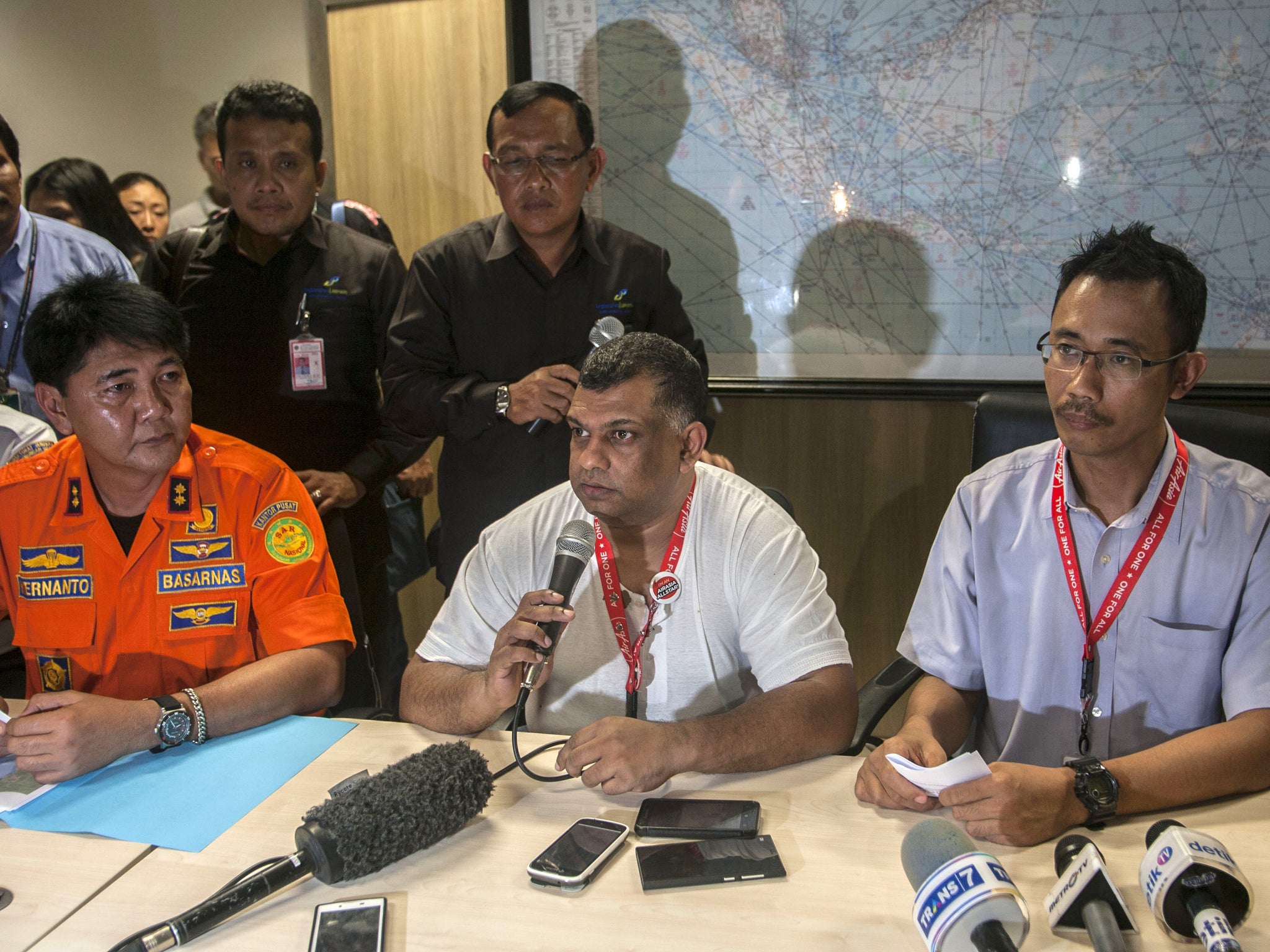Missing AirAsia flight QZ8501: Aviation expert claims there is little chance of finding survivors from missing plane
The plane is unlikely to have carried enough fuel to last an entire day in the air

Your support helps us to tell the story
From reproductive rights to climate change to Big Tech, The Independent is on the ground when the story is developing. Whether it's investigating the financials of Elon Musk's pro-Trump PAC or producing our latest documentary, 'The A Word', which shines a light on the American women fighting for reproductive rights, we know how important it is to parse out the facts from the messaging.
At such a critical moment in US history, we need reporters on the ground. Your donation allows us to keep sending journalists to speak to both sides of the story.
The Independent is trusted by Americans across the entire political spectrum. And unlike many other quality news outlets, we choose not to lock Americans out of our reporting and analysis with paywalls. We believe quality journalism should be available to everyone, paid for by those who can afford it.
Your support makes all the difference.As the first day's search for the missing AirAsia plane drew to a close, a leading aviation expert has warned there is little chance of finding survivors.
Flight QZ8501 was carrying 162 people on board when it lost contact with ground control at 7:24 local time on its journey from Surabaya in Indonesia to Singapore. The Foreign office has confirmed it has been informed of a British national on board the flight.
Sunday’s search was called off after darkness fell and will resume at 6am local time on Monday morning.
But leading aviation experts have warned that there is a slim chance of finding any survivors, due to the period of time that had already passed since the last contact was made with the plane, and the weather conditions in the area.
David Learmount, Flight Global's operations and safety editor, said it was “routine” for pilots to request diversions when approaching stormy conditions, as was the case with the Airbus A320-200.
He said: “We're not just talking about thunder and lightning here.
”Storms can be very, very powerful indeed and rip a medium-sized aeroplane completely apart, that's why a pilot will routinely ask to divert around them.
“The plane could not still be airborne - it was a short-haul flight, there would be no fuel for staying in the air for quite as long as this.”
Mr Learmount, who is a pilot, also ruled out the likelihood of passengers surviving a sea landing.
He added: “The pilots were talking to air traffic control right until the last minute.
”Something distracted their attention so they were no longer able to keep talking. We don't know what happened at the moment, and it doesn't appear to be a deliberate act.
“We can speculate ad infinitum when the only thing we can go on is that it is missing.
”But I think the prognosis is not good.“
However, William Waldock, an expert on air crash search and rescue with Embry-Riddle Aeronautical University in Prescott, Arizona, said people must “reserve judgement” until the circumstances around the plane’s disappearance are understood.
“I think we have to let this play out. Hopefully the airplane will get found, and if that happens, it will probably be in the next few hours,” he said on Sunday. “Until then, we have to reserve judgement.”
The air search was halted at 5.30pm local time due to poor visibility. Some ships are continuing the search overnight.
The Airbus A320 is a workhorse of modern aviation. The A320 family of jets, which includes A319 and A321, has a very good safety record, with just 0.14 fatal accidents per million take-offs, according to a safety study published by Boeing in August.

Flight QZ8501 disappeared while it was at its cruising altitude, which is usually the safest part of a trip. Just 10 percent of fatal crashes from 2004 through 2013 occurred while a plane was in that stage of flight, according to the August Boeing safety report.
Passing through bad weather such as severe thunderstorms could have been a factor with Flight QZ8501. Airbus jets are very sophisticated and are able to automatically adjust to wind shears or other weather disruptions. However, weather has played a role in past air disasters that occurred at cruise elevation, including the 2009 Air France Flight 447 crash over the Atlantic Ocean.
Another possibility is some type of catastrophic metal fatigue caused by the cycle of pressurization and depressurization associated with each take-off and landing cycle — something that Flight Z8501 would have done a great amount. However, metal fatigue is unlikely because this plane is only six years old.
Additional reporting by AP
Join our commenting forum
Join thought-provoking conversations, follow other Independent readers and see their replies
Comments